HTML Email
Definition
HTML email is a message formatted using HTML (Hypertext Markup Language), allowing for richer and more visually appealing content than plain text emails.
Description
HTML email allows for more visually appealing and engaging email content, which can increase reader engagement and improve marketing and communication efforts. It also enables the inclusion of multimedia elements like images, videos, and links, making it easier to convey information and drive action.
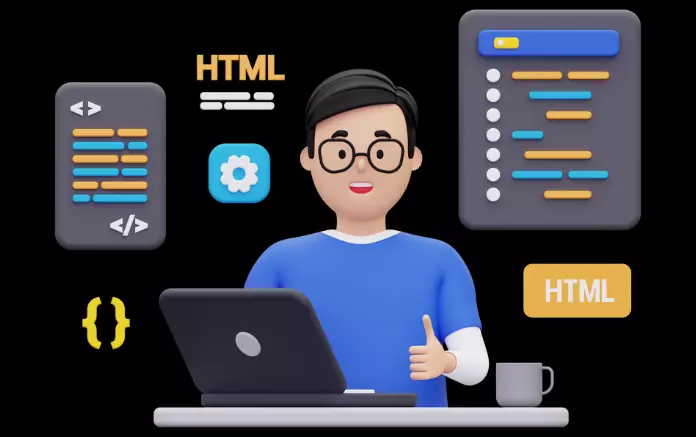
An HTML email is an email message that uses HTML (Hypertext Markup Language) to format the content, allowing for a more visually appealing and interactive experience compared to plain text emails. HTML emails often include images, links, and formatting such as bold or italicised text and can also incorporate multimedia elements like videos or animations.
They are commonly used for marketing and promotional purposes, as well as for newsletters, announcements, and other types of communication where a more engaging and dynamic format is desired.
Importance of HTML Email
Here are some bullet points summarising the importance of HTML email:
- Allows for more visually appealing and engaging email content
- Increases reader engagement and click-through rates
- Enables the inclusion of multimedia elements like images, videos, and links
- Easier to convey information and establish a personal connection with recipients
- Builds brand awareness and promotes customer loyalty
- Facilitates tracking and analysis of email performance metrics
- Provides insights into reader behaviour and preferences for use in future marketing efforts
How to create an HTML email?
To create an HTML email, you can follow these general steps:
- Plan your email content and design. Determine the purpose of your email, the message you want to convey, and the design elements you want to include.
- Use an email editor or HTML editor to create your email. Various email editors, such as Mailchimp, Constant Contact, or Campaign Monitor, allow you to create HTML emails using pre-designed templates or a drag-and-drop interface. Alternatively, you can use an HTML editor like Adobe Dreamweaver to write the HTML code for your email from scratch.
- Write the HTML code for your email. This involves coding your email’s structure, formatting, and design elements using HTML tags and CSS stylesheets.
- Test your email. Before sending your email to subscribers, test it to ensure it displays correctly on different email clients and devices. Use email testing tools like Litmus or Email on Acid to preview your email in other email clients and get insights on optimising it for better performance.
- Send your email. Once you’ve tested your email and made any necessary changes, you can send it to your subscribers using your email service provider. Track your email performance metrics and use them to improve your future email campaigns.
Best Practices for HTML Email
Here are some best practices for creating HTML emails:
- Keep your email design simple and clean. Use a clear and concise layout, minimal text, and a few well-chosen images.
- Use a responsive email design to display your email correctly on all devices.
- Include a clear and compelling call-to-action (CTA) in your email. This can be a button or a link encouraging readers to act.
- Personalise your email content as much as possible. Use recipient names and other relevant information to make your email more personal and targeted.
- Optimise your email for readability using a legible font, appropriate font size, and plenty of white space.
- Avoid using too many images, as they can slow down email load times and increase the likelihood of your email being marked as spam.
- Use alt text for images to ensure your message is still conveyed even if the images don’t load.
- Include a plain text version of your email, as some email clients may not support HTML emails.
- Test your email thoroughly before sending it to ensure it displays correctly on different email clients and devices.
- Monitor your email performance metrics and use the insights gained to improve your future email campaigns.
What are the benefits of HTML Email?
Here are some benefits of using HTML email:
- Improved visual appeal: HTML email allows for more visually appealing and engaging email content, which can increase reader engagement and improve marketing and communication efforts.
- Increased click-through rates: HTML emails typically have higher click-through rates than plain text emails, as they include multimedia elements like images, videos, and links, making it easier to convey information and drive action.
- Better brand recognition: HTML email lets you use branding elements like logos, colours, and fonts to create a more consistent and recognizable brand identity across all communications.
- Greater personalization: HTML email lets you personalize your content using recipient names and other relevant information, making your emails feel more personal and targeted.
- Detailed performance tracking: With HTML email, you can track and analyze email performance metrics such as open rates, click-through rates, and conversions, providing valuable insights into how readers are interacting with your content and informing future email marketing strategies.
- Higher conversion rates: By creating visually appealing and personalized emails, you can increase readers’ likelihood of action, resulting in higher conversion rates and improved business results.
- Easier to share: HTML email can be easily shared via social media, forwarding, or other digital channels, enabling you to expand your reach and amplify your message.
Example
<!DOCTYPE html>
<html>
<head>
<title>Welcome to Our Newsletter!</title>
</head>
<body>
<table>
<tr>
<td>
<img src=”https://example.com/logo.png” alt=”Logo”>
</td>
<td>
<h1>Welcome to Our Newsletter</h1>
<p>Thank you for subscribing to our newsletter. We’re excited to share the latest news and updates with you!</p>
<button style=”background-color: #3498db; color: white; padding: 10px 20px; border-radius: 5px;”>Get Started</button>
</td>
</tr>
</table>
</body>
</html>
This HTML email includes a simple layout with a logo, header, text content, and a call-to-action button. It uses HTML tags to structure the content, including a table for design and an image tag to display the logo. The CSS styles for the call-to-action button are inline, using the “style” attribute. This HTML code can be a template for creating various HTML emails.
FAQ
What is an HTML email?
An HTML email is an email message that uses HTML (Hypertext Markup Language) to format its content, allowing for the inclusion of images, videos, links, and other multimedia elements.
Why is HTML email important?
HTML email is important because it can improve the visual appeal of email content, increase engagement and click-through rates, and enable greater personalization and brand recognition. It also allows for detailed performance tracking and analysis, helping to inform future email marketing strategies.
How do you create an HTML email?
To create an HTML email, you can use an email marketing tool or create the HTML code using a text editor or HTML editor. You must structure your content using HTML tags, include any multimedia elements using the appropriate HTML tags, and style your email using CSS (Cascading Style Sheets).
What are some best practices for creating HTML emails?
Some best practices for creating HTML emails include keeping the design simple and clean, using a responsive email design, including a clear call-to-action, personalising the content, optimising for readability, avoiding too many images, including alt text for images, providing plain text version, testing thoroughly, and monitoring performance metrics.
What are the benefits of HTML email?
The benefits of using HTML email include improved visual appeal, increased click-through rates, better brand recognition, greater personalization, detailed performance tracking, higher conversion rates, and easier sharing.
Can all email clients display HTML emails?
No, not all email clients can display HTML emails. Some email clients may strip out or block certain HTML elements, and some may only display the plain text version of the email. Testing your HTML email on different email clients and devices is important to ensure compatibility.
Heat Maps
Definition
A heat map in marketing is a visual representation of data that shows the areas of a webpage or email that receive the most engagement or clicks from users, helping to identify patterns and optimise marketing efforts.
Description
Increasing engagement from the users is the primary intent of marketers. A heat map in marketing visually represents data to show the areas of a webpage or email that receive the most engagement or clicks from users, using colour to indicate the intensity or density of user activity.
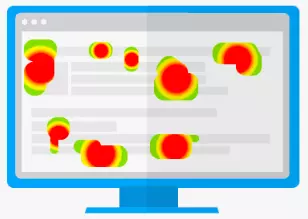
Heat maps help marketers identify patterns in user behaviour, such as where users tend to click the most, and optimise their marketing efforts accordingly to improve conversions and user experience. Heat maps can also be used to track the performance of various marketing campaigns and make data-driven decisions about future marketing strategies.
Importance of Heat Map in Marketing
Heat maps are an essential tool in marketing for several reasons:
- Identifying hotspots: Heat maps help identify the areas on a webpage or email that receive the most engagement or clicks, indicating which areas are most effective in grabbing the user’s attention. This can help marketers optimise their content and design to better engage their audience.
- Understanding user behaviour: Heat maps help marketers understand how users interact with their content, such as where they focus their attention or navigate the page. This information can be used to improve user experience and drive conversions.
- A/B testing: Heat maps can be used to compare the performance of different versions of a webpage or email, allowing marketers to test various design and content elements and make data-driven decisions about what works best.
- Optimization: Heat maps can be used to optimise marketing campaigns, helping to increase engagement and conversions by focusing on the areas of a webpage or email that receive the most user activity.
How to use heat maps for SEO strategy?
Heat maps can be a valuable tool for SEO strategy in the following ways:
- Content optimization: Heat maps can help identify the areas of a webpage that receive the most clicks or engagement from users, indicating which content is most relevant and valuable to them. This information can be used to optimise content to improve its SEO performance.
- User experience optimization: Heat maps can help identify webpage areas that do not receive as much engagement or clicks, indicating potential user experience issues. This information can be used to optimise the user experience of a webpage, which can improve its search engine ranking.
- Identifying keyword opportunities: Heat maps can help identify keywords most relevant to users by analysing the areas of a webpage that receive the most clicks or engagement. This information can be used to identify new keyword opportunities and optimise content for those keywords.
- Tracking user behaviour: Heat maps can help track how users interact with a web page over time, providing insights into user behaviour and preferences. This information can be used to continuously optimise content and user experience for better SEO performance.
Future of Heat Map in digital marketing
The future of heat maps in digital marketing will likely involve more advanced and sophisticated technology, such as artificial intelligence and machine learning. This will allow for an even more precise and accurate analysis of user behaviour and engagement, providing deeper insights into user preferences and patterns. Additionally, integrating heat maps with other tools and technologies, such as predictive analytics and personalization engines, will enable marketers to deliver even more targeted and personalised experiences to their users. As digital marketing continues to evolve and become more data-driven, heat maps will be an essential tool for analysing user behaviour and optimising marketing strategies for better results.
Example
Flipkart uses heat maps to track user engagement on its website, analysing which areas of the site receive the most clicks and attention. This information is used to optimise the user experience and drive conversions. Heat maps are also used to analyse the performance of marketing campaigns and promotional offers, helping to make data-driven decisions about future marketing strategies. Using heat maps, Flipkart can gain valuable insights into user behaviour and optimise its marketing efforts for better results.
FAQ
What is a heat map in marketing?
A heat map in marketing is a visual representation of data that shows the areas of a webpage or email that receive the most engagement or clicks from users, using colour to indicate the intensity or density of user activity.
How is a heat map used in marketing?
Heat maps are used in marketing to analyse user behaviour, optimise content and design, and improve user experience. They help identify the areas of a webpage or email that receive the most clicks or engagement and can be used to test and optimise different marketing strategies.
What are the benefits of using a heat map in marketing?
The benefits of using a heat map in marketing include identifying hotspots on a webpage or email, understanding user behaviour, A/B testing, and optimization. Heat maps can provide valuable insights into user behaviour and help marketers make data-driven decisions about their marketing strategies.
What are some tools that can be used to create a heat map?
Several tools can be used to create a heat map, such as Crazy Egg, Hotjar, and Mouseflow. These tools use tracking and analytics to generate heat maps that show user engagement and behaviour on a webpage or email.
How can heat maps be used for SEO strategy?
Heat maps can be used for SEO strategy by identifying webpage areas that receive the most engagement or clicks, optimising content for keywords, and improving user experience. Heat maps can also track user behaviour over time, providing insights into user preferences and enabling continuous optimization for better SEO performance.
Geo Targeting
Definition
Geotargeting delivers content or advertisements to a specific audience based on geographic location.
Description
Geotargeting is a digital marketing strategy that uses location data to target specific audiences with relevant content or advertisements based on their geographic location. It effectively reaches customers or potential customers in a specific geographic area, such as a city, region, or country.

There are several ways that geotargeting can be implemented, including:
- IP address targeting: This method uses the IP address of a user’s device to determine their location. Advertisers can use this information to serve relevant ads to users in a specific geographic area.
- GPS targeting: This method uses GPS data from a user’s mobile device to pinpoint their location. Advertisers can use this information to serve ads to users in a specific radius around a location, such as a retail store.
- Wi-Fi targeting: This method uses the location of a user’s Wi-Fi network to determine their location. Advertisers can use this information to serve ads to users in a specific geographic area, such as a coffee shop or airport.
- Behavioral targeting: This method uses data about a user’s past online behavior to determine their interests and preferences. Advertisers can use this information to serve ads to users in a specific geographic area who are likely to be interested in their products or services.
Importance of Geo-Targeting
Geotargeting is essential for several reasons:
- Reach a specific audience: Geotargeting allows businesses to reach a particular audience in an exact location, which can benefit businesses that operate in a specific geographic area or have products or services relevant to a particular region.
- Increase relevance: Businesses can target users in a specific location to make their advertising or content more relevant to their audience. For example, a restaurant can promote a special offer to users in the local area, or a retailer can advertise popular products in a specific region.
- Improve ROI: By targeting specific audiences, businesses can improve the effectiveness of their advertising campaigns and increase their return on investment (ROI). By serving ads to users more likely to be interested in their products or services, businesses can reduce wasted advertising spend and increase conversions.
- Better data analysis: Geotargeting provides businesses with valuable data about their audience, such as location, demographics, and behavior. This information can be used to improve future marketing campaigns and better understand their audience.
- Competitive advantage: Using geotargeting, businesses can gain a competitive advantage by reaching audiences their competitors may not be targeting. This can help businesses increase market share and generate more revenue.
How to Start Geo Targeting?
To start geo-targeting, you can follow these steps:
- Define your target audience: Identify the geographic location of your target audience. This can be based on factors such as your business location, customer demographics, or marketing goals.
- Choose a geo-targeting method: Determine which geo-targeting method you will use, such as IP address targeting, GPS targeting, Wi-Fi targeting, or behavioral targeting.
- Select a platform: Choose a platform that supports geo-targeting, such as Google Ads, Facebook Ads, or LinkedIn Ads.
- Set up your campaign: Create and set your targeting options, such as location, radius, language, and device type.
- Create relevant content or advertising: Create content or advertising that is relevant to your target audience and their location. For example, if you are targeting users in a specific city, you could include local landmarks or events in your advertising.
- Monitor and optimize your campaign: Monitor the performance of your campaign and make adjustments as needed. This could include adjusting your targeting options, changing your messaging, or optimizing your landing pages.
- Measure your results: Measure the success of your campaign using metrics such as click-through rates, conversion rates, and ROI. This information will refine your future campaigns and improve your overall marketing strategy.
Future Aspects of Geo-Targeting
The future of geotargeting looks promising as technological advancements continue to provide more precise and accurate location data. Here are some future aspects of geotargeting:
- Increased personalization: As location data becomes more accurate, businesses can provide more personalized experiences to their customers. This could include personalized content, offers, and promotions based on a user’s precise location and interests.
- Enhanced automation: Automation will play a vital role in the future of geotargeting. Machine learning algorithms can analyze large amounts of data and provide insights to help businesses optimize their geotargeting campaigns.
- Integration with other technologies: Geotargeting will likely be integrated with other technologies, such as augmented reality and virtual reality. This could enable businesses to provide more immersive experiences to their customers based on their location.
- More precise targeting: As location data becomes more accurate, businesses can target audiences more precisely. This could include targeting users based on their indoor location, such as inside a specific store or venue.
- Increased privacy concerns: As the use of location data continues to grow, there will be increased concerns around privacy and data security. Businesses must ensure transparency about using location data and allow users to opt-out.
How to use Geo-Targeting to Drive Conversions?
Geo-targeting can be a powerful tool for driving conversions. Here are some tips for using geo-targeting to drive conversions:
- Use precise targeting: Use precise targeting options to ensure your ads or content reach the right audience. For example, you can target users in a specific location or within a certain radius of your business.
- Create relevant content: Create content or advertising relevant to your target audience and their location. This could include local offers, promotions, or events.
- Use location-based keywords: Use location-based keywords in your ad copy or content to increase relevancy and improve your chances of ranking for local searches.
- Optimize your landing pages: Create landing pages optimized for your geo-targeted audience. This could include local information, contact information, and calls to action.
- Monitor and adjust: Monitor the performance of your geo-targeted campaigns and make adjustments as needed. This could include adjusting your targeting options, changing your messaging, or optimizing your landing pages.
- Use retargeting to re-engage users who have already visited your website or engaged with your content. This can be a powerful way to drive conversions by reminding users of your brand, products, or services.
Using geo-targeting to drive conversions, businesses can increase their ROI and improve their overall digital marketing strategy. Businesses can increase the chances of converting users into customers by targeting the right audience with relevant content and optimizing landing pages.
Geo-Targeting Tests to Drive Conversions
Geo-targeting tests can be an effective way to optimize your digital marketing campaigns and drive conversions. Here are some geo-targeting tests you can conduct to drive conversions:
- Test different targeting options:
Targeting users in other cities or within a specific radius of your business can be a wise option for capturing the audience’s attention. This can help you identify the most effective targeting options for driving conversions.
- Test different ad copy and messaging:
Test separate ad copy and messaging for your geo-targeted campaigns. This could include testing different calls to action or highlighting local offers or promotions.
Testing different ad copy is great for geotargeting because it allows businesses to identify the most effective messaging for specific audiences in other locations. Businesses can optimize their geo-targeted campaigns by testing different ad copy to drive more conversions and improve ROI. This can lead to better engagement, increased brand awareness, and more targeted leads or sales.
- Test different landing pages:
Test different landing pages for your geo-targeted campaigns. This could include creating landing pages specific to a particular location or optimizing landing pages based on local search intent.
Testing different landing pages is great for geotargeting because it allows businesses to create customized experiences for specific audiences in different locations. Businesses can optimize their geo-targeted campaigns by testing different landing pages to drive more conversions and improve ROI. This can lead to higher engagement, more targeted leads or sales, and a better user experience for the target audience.
- Test different offers and promotions:
Test different offers and promotions for your geo-targeted campaigns. This could include testing different discounts or promotions based on the local market.
Testing different offers and promotions is great for geotargeting because it allows businesses to identify the most effective incentives for specific audiences in different locations. Businesses can optimize their geo-targeted campaigns by testing various offers and promotions to increase conversions and improve ROI. This can lead to higher engagement, increased brand loyalty, and more targeted leads or sales.
- Test different ad formats:
Test different ad formats for your geo-targeted campaigns. This could include testing display ads versus search ads or different ad sizes and placements.
Testing different ad formats is great for geotargeting because it allows businesses to identify the most effective ways to reach specific audiences in different locations. Businesses can optimize their geo-targeted campaigns by testing various ad formats to drive more conversions and improve ROI. This can lead to better engagement, increased brand awareness, and more targeted leads or sales.
- Test retargeting options:
Test different retargeting options for your geo-targeted campaigns. This could include retargeting users who have already engaged with your website or social media channels or visited specific locations.
Retargeting is a powerful tool that allows advertisers to target users who have already interacted with their brand or website. This is particularly useful for geotargeting as it will enable advertisers to specifically target users in a certain location who have already shown interest in their product or service. By focusing their efforts on these high-value users, advertisers can increase the effectiveness of their campaigns and drive more conversions.
Example

An example of a brand that uses geo-targeting is Starbucks. Starbucks uses location data to send personalized offers and promotions to customers based on their current location. For example, a customer near a Starbucks store may receive a notification for a discounted drink or food item, encouraging them to purchase. This type of targeted advertising helps to increase customer engagement and drive foot traffic to specific store locations.
FAQ
What is geo-targeting?
Geo-targeting is a marketing strategy that delivers targeted advertisements or content to specific geographic locations or regions.
How does geo-targeting work?
Geo-targeting uses location data to identify a user’s or device’s physical location. This information can then deliver personalized content or advertising to users in that specific location.
What are the benefits of geo-targeting?
The benefits of geo-targeting include increased relevance and personalization of content or advertising, higher engagement rates, and improved ROI for marketers.
What types of businesses can benefit from geo-targeting?
Any business with a physical presence, such as brick-and-mortar stores or service providers, can benefit from geo-targeting. Online businesses can also benefit by targeting users in specific regions or tailoring their marketing efforts to different regions’ local customs and preferences.
What are some standard methods of geo-targeting?
Common geo-targeting methods include IP targeting, device ID targeting, and GPS targeting. These methods allow advertisers to deliver content or advertising to users based on their physical location or device location.
How can businesses implement geo-targeting?
Businesses can implement geo-targeting by using location-based advertising platforms or partnering with location data providers to access location data for their target audience. They can also use location-based social media features or create location-specific landing pages for their website.
Are there any privacy concerns associated with geo-targeting?
Yes, there are privacy concerns associated with geo-targeting, particularly with regard to the collection and use of user location data. Businesses must ensure that they comply with relevant data privacy regulations and obtain user consent for collecting and using their location data.
Drip Nurturing
Definition
Drip nurturing is a marketing strategy that sends automated and personalized messages to potential customers over an extended period.
Description
It can help businesses build stronger relationships with potential and existing customers by providing them with relevant and personalised content over time. By sending targeted messages based on the recipient’s behavior and interests, businesses can increase engagement, trust, and conversions.
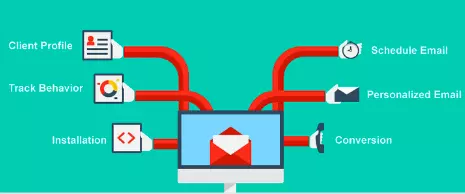
It can also save time and resources by automating the process of lead nurturing and customer retention.
These messages are usually delivered via email but can also be through other social media or messaging apps. It aims to gradually build a relationship with the recipient, provide them with relevant information, and encourage them to take a desired action, such as making a purchase or requesting more information.
The messages are often timed and tailored to the recipient’s behavior or interests, ranging from educational content to promotional offers. It is a widespread technique businesses use to help convert leads into customers and keep existing customers engaged.
Importance of Drip Nurturing
It is an important marketing strategy for businesses because it allows them to:
- Build relationships with potential and existing customers: It enables businesses to stay top of mind and build trust with their audience over time, which can lead to increased conversions and customer loyalty.
- Save time and resources: By automating the process of lead nurturing and customer retention, businesses can save time and resources that would otherwise be spent on manual outreach.
- Deliver personalised and relevant content: It allows businesses to send targeted messages based on the recipient’s behavior and interests, improving engagement and conversion rates.
- Track and analyse audience behavior: It provides businesses with valuable insights into their audience’s behavior and preferences, which can be used to refine marketing strategies and improve overall performance.
How to plan for drip nurturing?
To plan for drip nurturing, businesses can follow these steps:
- Define the goal: Identify the specific purpose of the campaign, such as lead generation, customer retention, or upselling.
- Segment the audience: Segment the audience based on criteria such as demographics, behavior, and interests, to ensure that the messages are targeted and relevant.
- Plan the content: Plan a series of messages that align with the campaign’s goal and the target audience’s needs and interests. The messages should be timed appropriately and include a clear call to action.
- Choose the platform: Choose the platform or tool for delivering the messages, such as email marketing software, marketing automation software, or a customer relationship management (CRM) system.
- Set up the automation: Set up the automation for delivering the messages at the appropriate time intervals and triggers based on the audience’s behaviour.
- Test and optimise: Test the campaign and analyse the results to optimise the messaging, timing, and audience segments for better performance.
- Monitor and adjust: Monitor the campaign regularly and adapt the messages or timing as needed to ensure the campaign achieves the desired results.
The future aspect of Drip Nurturing
The future aspect of it is constantly evolving as new technologies and marketing strategies emerge. One potential direction is using artificial intelligence and machine learning to personalise and optimise the content of emails. Companies can deliver more relevant and compelling content that resonates with customers’ needs and interests by analysing customer data and behavior.
Another future aspect is the integration of other channels, such as social media and SMS messaging, to create a more seamless and omnichannel customer experience. This can help companies reach customers where they are most active and engaged and provide a more cohesive and integrated marketing strategy.
Additionally, the future of it may involve a greater emphasis on storytelling and brand building as customers increasingly value authenticity and transparency in their interactions with businesses. Companies can build more profound and meaningful relationships with their customers over time by creating compelling stories and messaging that aligns with the customer’s values and interests.
When to use drip nurturing?
It is an effective marketing strategy for building relationships with potential customers over time and guiding them toward purchasing. It’s beneficial for businesses with a longer sales cycle or offers complex products or services that require significant research and consideration before making a decision.
You can use drip nurturing in a variety of situations, such as:
- Lead generation: After someone expresses interest in your business or product, you can use drip nurturing to provide them with more information and build a relationship over time.
- Onboarding: If you offer a subscription or service, you can use drip nurturing to help customers get started and guide them through the initial stages of using your product.
- Re-engagement: If someone has shown interest in your business in the past but has yet to engage with you recently, you can use drip nurturing to rekindle their interest and encourage them to make a purchase.
- Upselling or cross-selling: Once someone has made a purchase, you can use drip nurturing to offer additional products or services that complement their initial purchase.
Example
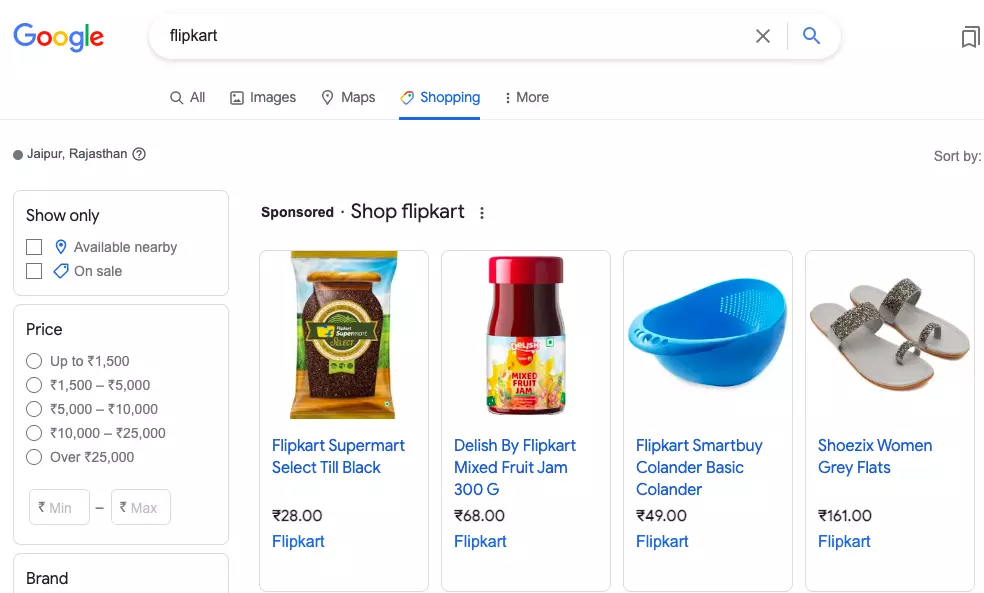
Flipkart, one of India’s largest e-commerce companies, uses drip nurturing to encourage customers to complete their purchases. If a customer abandons their cart, they receive a series of reminder emails with personalised recommendations and offers.
FAQ
What is drip nurturing?
It is a marketing strategy that involves sending automated, targeted emails to potential customers over time to build relationships, provide value, and ultimately drive sales.
How does drip nurturing work?
Drip nurturing typically involves creating emails based on the customer’s behavior or actions at predetermined intervals. The emails are personalised and tailored to the customer’s interests and need to provide relevant information and guidance that helps them move closer to making a purchase.
What are the benefits of drip nurturing?
It can help businesses build relationships with potential customers over time, increase engagement and conversions, and drive sales. Businesses can also improve customer satisfaction and loyalty by providing targeted and personalised content.
What are some best practices for drip nurturing?
Some best practices for drip nurturing include: segmenting your audience based on behaviour and interests, personalising your content, using clear and concise messaging, optimising your email design for mobile devices, and testing and refining your campaigns over time.
What are some tools for implementing drip nurturing?
Many tools are available for implementing drip nurturing, including email marketing platforms like Mailchimp, Constant Contact, and Hubspot and marketing automation tools like Marketo, Pardot, and Eloqua. The choice of tool will depend on your business needs and budget.
Clickbait
Definition
Piece of content posted with the main intent to attract the attention of the visitors and encourage them to click on a link to a particular web page is known as Clickbait.
Description
Clickbait refers to online content, such as headlines, thumbnails, or article teasers, specifically designed to attract attention and generate clicks, often by using sensational or exaggerated claims, misleading information, or provocative language.

The term “clickbait” derives from baiting people to click on a link or article with the promise of providing them with something they want or need, only to redirect them to something entirely different or disappointing.
Online publishers and marketers often use it to increase traffic and engagement, which can lead to higher ad revenue or sales. Examples of clickbait headlines or teasers might include phrases such as “You won’t believe what happened next,” “The shocking truth about [blank],” or “This one weird trick will change your life.” These claims are intentionally vague and sensational, designed to pique the reader’s curiosity and encourage them to click through to the article or video.
One of the problems with clickbait is that it can be misleading and may not actually deliver on the promises made in the headline or teaser. This can lead to frustration and disappointment among readers, who feel as though they’ve been tricked or misled.
Clickbait can contribute to the spread of misinformation, as headlines that make bold or exaggerated claims may not be based in fact or may distort the truth to generate clicks.
Effects of Clickbait
Clickbait may be effective at generating clicks and increasing traffic to a website, it is important to recognize that it can have negative consequences.
- Clickbait headlines and teasers often use sensational or misleading language, which can erode trust between the reader and the publisher. When readers feel that they have been misled or tricked into clicking on an article, they are less likely to trust that publisher.
- It can contribute to misinformation, as headlines that make exaggerated or false claims may be shared widely on social media, leading to confusion and misunderstanding.
- It can also be frustrating for readers looking for truthful information, as they may have to sift through numerous sensational headlines to find what they are looking for.
- While it is understandable that publishers may be motivated to use clickbait to generate traffic and revenue, balancing this with a commitment to providing accurate and valuable content is important.
- By creating engaging, informative, and trustworthy content, publishers can build a loyal readership that will return to their site repeatedly. In the long run, this approach will likely be more sustainable and beneficial than clickbait tactics that may damage the publisher’s reputation.
Tips to use Clickbait in your Content Marketing Strategy
Clickbait can have negative consequences if misused, but there are ways to incorporate it into your content marketing strategy more ethically and effectively. Here are some tips for responsibly using clickbait:
- Use attention-grabbing headlines: Your headline is the first thing readers will see, so make sure it’s compelling and attention-grabbing. Use strong action words, make a bold claim, or ask a thought-provoking question to draw readers in.
- Deliver on your promises: While it’s essential to use a catchy headline to grab readers’ attention, it’s equally important to deliver on the promises made in that headline. Make sure your content provides value and lives up to the expectations you set in your headline.
- Use visuals: Incorporating eye-catching visuals, such as images or videos, can help make your content more engaging and increase the chances of readers clicking through to your content.
- Know your audience: It’s important to understand who your audience is and what content they are interested in. By creating content that resonates with your target audience, you can increase the likelihood that they will click through to your content.
- Use clickbait sparingly: While clickbait can effectively generate clicks, it should be used only when appropriate. Overusing clickbait can lead to losing the trust of your audience and ultimately harm your brand’s reputation.
The future aspect of Clickbait
The future of clickbait is challenging to predict, as it depends on a number of factors, including changes in technology, consumer behavior, and ethical considerations. However, clickbait will likely continue to be used in some form, as it has proven to be an effective tactic for generating traffic and engagement.
One trend that may emerge is a move towards more ethical and responsible use of clickbait. As consumers become more aware of the tactics used by online publishers and marketers, there may be greater demand for genuine, informative, and trustworthy content. Publishers who can provide this type of content while incorporating attention-grabbing headlines and visuals may be more successful in the long run.
Another trend that may emerge is a shift towards more personalised and targeted clickbait. As technology allows for extraordinary data collection and analysis, publishers can create content tailored to individual readers’ interests and preferences. This could increase the effectiveness of clickbait by making it more relevant and engaging for each reader.
Though the future of clickbait is uncertain, it will continue to be used in some form or another. Publishers who can use clickbait responsibly and effectively while prioritising the delivery of valuable content are likely to be successful in the long run.
Also Read – How To Write Engaging Content For Website?
Example

The title “This is how you get rich in your 20s”, and “7 creative ways to get rich in your 20’s”, etc are great examples of infusing curiosity in the visitors. They will click on the link to find out quick tips to get richer fast when they are young.
FAQ
What is clickbait?
It refers to the content that uses sensationalised language and false or exaggerated claims in headlines to encourage people to click on a link and visit a website. The content often needs to deliver on the promise made in the headline, leading to disappointment for the reader.
Why do people use clickbait?
It is often used as a strategy to gain traffic to a website or increase engagement on social media. By using sensationalised language and provocative headlines, clickbait creators hope to capture readers’ attention and generate clicks.
Is clickbait ethical?
It is generally considered unethical because it relies on misleading readers with false or exaggerated claims. However, it can also be harmful, leading to disappointment and frustration for readers looking for truthful information.
How can I avoid falling for clickbait?
To avoid falling for it, it is essential to carefully read headlines and evaluate whether they are making reasonable claims. A headline that seems too good to be true or sensationalised may be clickbait. Additionally, it is vital to assess the source of the content and look for reputable, reliable sources.
Can clickbait be effective?
While clickbait may generate clicks and traffic in the short term, it is generally not an effective strategy for building a loyal audience or developing long-term success. Instead, by focusing on creating high-quality content that offers value to readers, content creators can build a loyal following and establish a reputation as a trusted source of information.
Also Read – 12 Surprising Examples of Headlines That Work
Lifetime Value
Definition
Lifetime value is the total amount of money a customer is expected to spend on a product or service during their relationship with a business.
Description
Lifetime value (LTV) is a metric that measures the total worth of a customer to a business over the entire duration of their relationship. This metric considers all customer transactions with a business, including the initial purchase, repeat purchases, and any upsells or cross-sells.
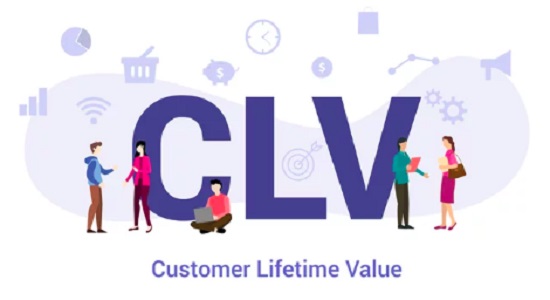
Calculating LTV helps businesses understand the value of acquiring and retaining customers. In addition, by knowing the LTV of their customers, businesses can determine how much they can spend on customer acquisition and retention efforts.
LTV is an important metric for businesses that rely on repeat purchases or subscriptions, such as e-commerce, software as a service (SaaS), and subscription-based businesses.
A high LTV indicates that a customer is loyal and generates significant revenue over time. A low LTV suggests that a customer may not be worth the cost of acquisition or retention efforts.
Importance of Lifetime Value
The importance of lifetime value (LTV) lies in its ability to help businesses make informed decisions about customer acquisition, retention, and marketing strategies. Here are some specific reasons why LTV is essential:
- Customer acquisition cost (CAC) optimization: LTV can help businesses determine how much they can spend on acquiring new customers. Businesses can compare LTV to CAC to ensure their customer acquisition efforts are profitable.
- Customer retention optimization: LTV can also help businesses identify which customers are worth investing in to retain. Customers with high LTV are more valuable and should receive more attention and resources to retain them.
- Revenue forecasting: By knowing the LTV of their customers, businesses can predict their revenue for future periods. This helps with budgeting, financial planning, and forecasting.
- Product development: LTV can also provide insights into which products or services are most profitable and popular among customers. This information can be used to develop new products or services likely to generate high LTV.
Strategies To Increase Customer’s Lifetime Value
There are several strategies that businesses can implement to increase a customer’s lifetime value (LTV). Here are some examples:
- Offer personalised experiences: By tailoring the customer experience to their preferences, businesses can build a stronger relationship with their customers and increase their likelihood of making repeat purchases.
- Implement loyalty programs: Offering rewards and incentives for repeat purchases can encourage customers to return and continue doing business with the company.
- Upselling and cross-selling: By suggesting additional products or services that complement a customer’s initial purchase, businesses can increase their revenue per customer.
- Provide excellent customer service: By providing prompt and helpful customer service, businesses can improve customer satisfaction and increase the likelihood of repeat purchases.
- Improve product or service quality: Delivering high-quality products or services can increase customer satisfaction and loyalty, leading to higher LTV.
- Focus on retention: Retaining existing customers is often more cost-effective than acquiring new ones, so businesses should prioritise retention efforts.
- Use targeted marketing: By using customer data to create personalised marketing campaigns, businesses can increase the relevance and effectiveness of their marketing efforts.
How to Calculate Lifetime Value?
To calculate lifetime value (LTV), you need to follow these steps:
- Determine the average purchase value: Divide the total revenue earned from a customer by the number of purchases they made.
- Calculate the average purchase frequency rate: Divide the number of purchases made by the number of unique customers.
- Calculate customer value: Multiply the average purchase value by the average purchase frequency rate.
- Determine the customer lifespan: Calculate the average years a customer continues purchasing from the business.
- Calculate LTV: Multiply the customer value by the customer lifespan.
The formula for calculating LTV is:
LTV = (Average Purchase Value x Average Purchase Frequency Rate) x Customer Lifespan
For example, if the average purchase value is $50, the average purchase frequency rate is 2 purchases per year, and the customer lifespan is 5 years, then the LTV would be: LTV = ($50 x 2) x 5 = $500
This means that the average customer is expected to spend $500 over their entire relationship with the business.
It’s important to note that LTV calculations can vary depending on the business and industry, and using accurate and relevant data to get an accurate LTV calculation is essential.
How is Lifetime Value used?
Lifetime value (LTV) is used in several ways by businesses to inform their decision-making processes. Here are some common uses of LTV:
- Customer acquisition cost (CAC) optimization: LTV determines the maximum a business can spend on acquiring new customers. This helps businesses ensure that their customer acquisition efforts are profitable and sustainable.
- Customer retention optimization: LTV is used to identify which customers are worth investing in to retain. Businesses can improve their revenue and profitability by focusing on retaining customers with high LTV.
- Revenue forecasting: LTV predicts a business’s future revenue based on its current customer base. This information helps with budgeting, financial planning, and forecasting.
- Marketing strategy optimization: LTV is used to inform marketing strategies, including targeting, messaging, and promotions. By understanding the LTV of different customer segments, businesses can tailor their marketing efforts to maximise revenue.
- Product and service development: LTV informs product and service development by identifying customers’ most profitable and popular products and services. This information can be used to develop new products and services likely to generate high LTV.
Example
Let’s compute the customers’ lifetime value (LTV) of Flipkart:
Determine the average purchase value: Let’s assume that the average purchase value of a Flipkart customer is INR 2,000.
Calculate the average purchase frequency rate: Let’s assume that the average purchase frequency rate is 4 purchases per year.
Calculate customer value: Multiplying the average purchase value by the average purchase frequency rate gives us a customer value of INR 8,000 per year.
Determine the customer lifespan: Let’s assume that the average number of years a customer continues to purchase from Flipkart is 3 years.
Calculate LTV: Multiplying the customer value by the customer lifespan gives us the LTV, which is INR 24,000.
The lifetime value of a Flipkart customer is INR 24,000. This means that, on average, a Flipkart customer is expected to spend INR 24,000 over their entire relationship with the company.
Flipkart can use this LTV calculation to make data-driven decisions about customer acquisition, retention, and marketing strategies. For example, they could invest in customer retention efforts to keep customers loyal and maximise their LTV or allocate marketing resources to target customers likely to generate high LTV.
FAQs
What is the customer lifetime value (LTV)?
Customer lifetime value (LTV) is a metric that measures the total amount of money a customer is expected to spend on a business’s products or services over the entire duration of their relationship with the business.
Why is LTV important?
LTV is important because it helps businesses understand the value of their customers and informs their decision-making processes around customer acquisition, retention, and marketing strategies.
How is LTV calculated?
LTV is calculated by multiplying the average purchase value by the average purchase frequency rate and then by the customer lifespan.
What are some strategies to increase LTV?
Some strategies to increase LTV include improving customer retention rates, increasing the frequency of customer purchases, cross-selling or upselling products or services, and providing excellent customer service.
How can LTV be used in marketing?
LTV can be used in marketing to identify the most profitable customer segments, tailor marketing messages and promotions to those segments, and allocate marketing resources to maximise revenue.
Is the LTV calculation the same for all businesses?
No, LTV calculation can vary depending on the business and industry. Using accurate and relevant data to get an accurate LTV calculation is important.
Can LTV change over time?
Yes, LTV can change over time due to changes in customer behavior, market conditions, and business strategies. It’s important to regularly monitor and update LTV calculations to ensure they remain accurate and relevant.
What are some limitations of LTV?
Some limitations of LTV include the assumptions made in the calculation, the potential for inaccuracies in data, and the fact that LTV does not account for changes in customer behavior over time.
HTML Banner
Definition
An HTML banner is a web-based advertisement created using HTML code and displayed on a website.
Description
An HTML banner is a type of web-based advertisement that is created using HTML code. It can contain various media such as images, videos, or animations and may include interactive elements such as buttons or forms.

HTML banners are typically displayed on websites or within email marketing campaigns and can be designed to fit different sizes and formats.
In addition, they can be static or animated and programmed to display or interact with users in specific ways, such as redirecting them to a landing page or prompting them to take a specific action.
Overall, HTML banners offer a flexible and dynamic way for advertisers to promote their products or services online.
Importance of HTML Banner
HTML banners are important for several reasons:
- Cost-effective: HTML banners are typically less expensive to produce than other forms of advertising, such as television or print ads. This makes them an ideal option for businesses with limited budgets.
- Reach: HTML banners can be displayed on various websites, making them a powerful tool for reaching large audiences.
- Customization: HTML banners can be customised to fit different sizes and formats, making them adaptable to various advertising platforms and devices.
- Interactive elements: HTML banners can include interactive elements such as buttons or forms, allowing advertisers to engage with their target audience more meaningfully.
- Measurable: HTML banners can be easily tracked and analysed, providing advertisers with valuable data on their advertising campaigns’ performance.
How to create an HTML Banner?
To create an HTML banner, follow these steps:
- Define the banner size and format: Determine your banner’s size and format based on the platform’s requirements where it will be displayed. Standard sizes include 300×250 pixels, 728×90 pixels, and 160×600 pixels.
- Design the banner: Use graphic design software such as Adobe Photoshop or Illustrator to design the visual elements of your banner. Include a clear and compelling call to action and ensure the banner is visually appealing and on-brand.
- Write the HTML and CSS code: Use a text editor or specialised HTML editor to write your banner’s HTML and CSS code. This code will determine your banner’s layout, style, and behaviour.
- Add images and animation: Use image editing software to optimise your ideas for the web and incorporate any animation or interactive elements into your banner using JavaScript.
- Test and optimise: your banner on different devices and browsers to ensure it displays correctly and functions as intended. Use A/B testing to optimise your banner’s design and messaging to maximise its effectiveness.
Things to keep in mind while designing HTML
When designing an HTML banner, there are several essential things to keep in mind:
- Keep it simple: The banner should be visually appealing but not cluttered. Use a clear and concise message with a simple design to ensure that your message is conveyed effectively.
- Use a clear call-to-action: The banner should have a clear and compelling call-to-action that encourages users to take a specific action.
- Optimise for size and load time: Ensure the banner file size is optimised for quick loading times. Large file sizes can slow down the load time, which may cause users to abandon the page.
- Be on-brand: The banner should reflect your brand’s visual identity, including colours, fonts, and imagery.
- Use high-quality images: Use high-quality images optimised for web use to ensure they are visually appealing and not pixelated.
- Be mindful of placement: The banner should be placed in a prominent location on the page where it is most likely to be seen by your target audience.
- Be mobile-friendly: Ensure that the banner is designed to be mobile-friendly, as more and more users are accessing the internet on their mobile devices.
Future prospect for HTML Banner
- Mobile-first approach: As more and more users access the internet on their mobile devices, HTML banners are becoming increasingly important for reaching these audiences. Advertisers are now designing banners specifically for mobile devices, incorporating responsive design and mobile-specific features.
- Interactive elements: HTML banners are becoming more interactive, with advertisers using animation, video, and interactive features such as quizzes, games, and surveys to engage users and increase their likelihood of clicking on the banner.
- Programmatic advertising: Programmatic advertising, which uses automated algorithms to purchase and place advertising, is rising. HTML banners are a popular format for programmatic advertising, as they are easy to customise and can be targeted to specific audiences.
- New technologies: Advancements in technology such as augmented reality, virtual reality, and 360-degree video are opening up new possibilities for HTML banner design and interactivity.
- Data analytics: HTML banners are highly measurable, and advancements in data analytics provide advertisers with more sophisticated ways of tracking and analysing the effectiveness of their campaigns.
Example
One Indian brand that has used HTML banners in its digital advertising is Flipkart, one of the country’s leading e-commerce platforms.
Flipkart has used HTML banners to promote various products and sales on its website and app, including during major shopping events such as its Big Billion Days sale.
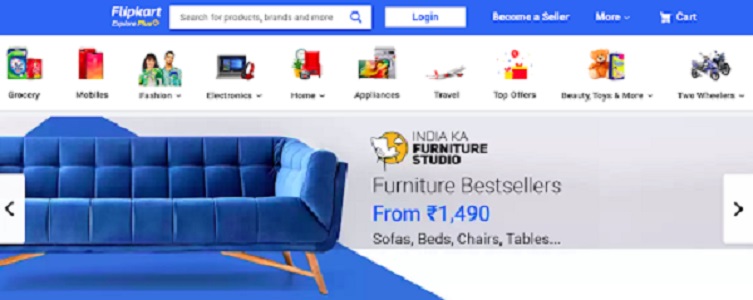
Flipkart has used HTML banners to promote its mobile app, offering discounts and other incentives for users who download and use the app.
The banners are designed to be visually appealing and mobile-friendly, with a clear call to action encouraging users to download the app.
Flipkart has also used HTML banners to promote specific product categories such as electronics, fashion, and home appliances. These banners typically feature high-quality images and a clear message about the products.
In addition, a call-to-action encourages users to click through to the relevant product pages.
Flipkart’s use of HTML banners has been an effective way to promote its products and drive sales on its platform, demonstrating the potential of this format for digital advertising in India.
FAQ
What is an HTML banner?
An HTML banner is a type of digital banner ad that is created using HTML code. It can include a combination of text, images, and interactive elements and can be designed to be mobile-friendly and responsive.
How do I create an HTML banner?
To create an HTML banner, you must have a basic understanding of HTML and CSS code. However, various online tools and software programs can help you design and create HTML banners without writing code from scratch.
What are the standard sizes for HTML banners?
The standard sizes for HTML banners vary depending on the platform and the ad placement. Some standard sizes include 300×250, 728×90, and 160×600 pixels.
How do I make my HTML banner mobile-friendly?
To make your HTML banner mobile-friendly, you must ensure that it is designed to be responsive, meaning that it can adjust to different screen sizes and orientations. You should also optimise the banner for load time, as mobile users are often more sensitive to slow loading times.
How do I track the performance of my HTML banner?
You can track your HTML banner’s performance using various analytics tools, such as Google Analytics. These tools can provide insights into metrics such as impressions, clicks, and conversions, allowing you to optimise your banner for maximum effectiveness.
Gamification
Definition
Gamification refers to adding game-like elements, such as points, badges, leaderboards, and challenges, to non-game contexts, such as education, marketing, and workplace activities.
Description
It aims to increase user engagement, motivation, and retention by tapping into people’s natural desires for competition, achievement, and social interaction. As a result, it often enhances learning, behaviour change, customer loyalty, and employee productivity.
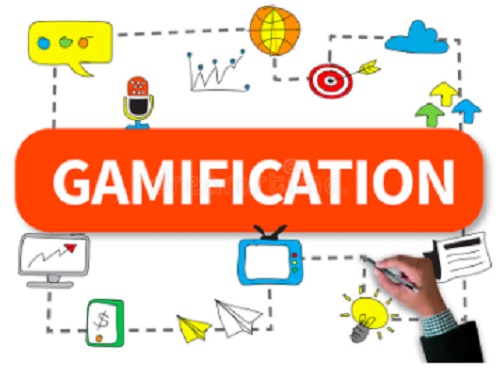
It leverages the psychological principles that underlie games. By incorporating elements such as points, badges, leaderboards, and challenges into non-game contexts, gamification creates a more immersive and rewarding user experience.
This can tap into users’ intrinsic motivations for competition, achievement, and social interaction, which can drive higher levels of engagement and participation.
Ultimately, it can create a more enjoyable and fulfilling user experience, increasing engagement and motivation.
Importance of Gamification
- It can enhance user engagement, motivation, and retention in various contexts.
- It can make non-game activities more enjoyable and rewarding for users.
- By tapping into intrinsic motivations, such as competition and achievement, gamification can drive higher levels of participation and learning.
- It can provide a sense of accomplishment and progress, boosting user motivation and driving continued engagement.
- It can be used in various fields, such as education, marketing, and the workplace, to achieve different goals, such as behaviour change, customer loyalty, and employee productivity.
Strategy for gamification in marketing
When using it as a marketing strategy, it’s essential to follow these steps:
- Define your audience: Identify your target audience and what motivates them.
- Set clear objectives: Determine what specific actions you want your audience to take and how it can help you achieve those goals.
- Design game mechanics: Create game-like elements such as points, badges, and leaderboards that align with your objectives and motivate your audience to engage with your brand.
- Provide rewards: Offer meaningful and valuable rewards to your audience to encourage continued engagement and loyalty.
- Test and iterate: Continuously monitor and analyse your gamification strategy’s performance and make necessary adjustments to improve its effectiveness.
Future of Gamification in Marketing
The future of it in marketing looks promising as more and more brands recognize the value of using game mechanics and design elements to engage with their audiences.
Here are some trends and predictions for the future of it in marketing:
- Personalization: Brands will increasingly use gamification to create personalised customer experiences, tailoring game mechanics and rewards to individual preferences and behaviours.
- Integration with emerging technologies: It will be integrated with emerging technologies such as virtual and augmented reality, making it more immersive and interactive.
- Sustainability and social impact: Brands will use it to promote sustainability and social impact initiatives, encouraging users to engage in positive behaviours that benefit the environment and society.
- Enhanced data analytics: As gamification becomes more sophisticated, brands can gather more data on user behaviour and preferences, allowing for more targeted and effective marketing strategies.
Best Practices for Gamification
Here are some best practices to consider when designing and implementing a strategy:
- Align game mechanics with business objectives: Ensure that the game mechanics you use align with your overall business objectives and are relevant to your target audience.
- Make it enjoyable: Create a fun and engaging experience that motivates users to participate and achieve their goals.
- Use clear rules and instructions: Clearly communicate the rules and instructions for participating in the game to avoid confusion and frustration.
- Provide meaningful rewards: Offer rewards that are meaningful and valuable to users, such as discounts, exclusive access, or social recognition.
- Monitor and analyse performance: Continuously monitor and analyse your gamification strategy’s performance to identify improvement areas and optimise user engagement.
- Incorporate social elements: Leverage social elements such as leaderboards and social sharing to create a sense of community and competition among users.
- Test and iterate: Continuously test and iterate your strategy to optimise its effectiveness and ensure it meets your business objectives.
Example
One example of an Indian brand successfully using gamification is Flipkart, one of India’s leading e-commerce companies.
Flipkart created a gamified app called “SuperCoins,” which rewards users for shopping on their platform with points that can be redeemed for various products and services.

SuperCoins also includes gamified features such as daily challenges and trivia quizzes, which engage users and encourage them to return to the app frequently.
Flipkart has also integrated SuperCoins with its loyalty program, offering additional benefits and perks for users who achieve certain milestones.
FAQ
What is gamification?
It uses game mechanics and design elements in non-game contexts to engage users and motivate them to take specific actions.
What are some examples of gamification?
Some examples include loyalty programs, fitness tracking apps, and educational games.
What are the benefits of gamification?
Gamification can increase user engagement, motivation, and retention, as well as drive behaviour change and learning.
What are some common game mechanics used in gamification?
Some common game mechanics used in gamification include points, badges, leaderboards, quests, and challenges.
How can businesses use gamification?
Businesses can use gamification to increase customer engagement and loyalty, improve employee productivity and satisfaction, and drive behaviour change and learning.
What are some best practices for gamification?
Best practices for gamification include aligning game mechanics with business objectives, making it enjoyable, providing meaningful rewards, and continuously monitoring and analysing performance.
What is the future of gamification?
The future of gamification will likely include more personalization, integration with emerging technologies, and a focus on sustainability and social impact.
Attribution Modeling
Definition
Attribution modeling is analysing and assigning credit to different touchpoints in a customer’s journey that leads to a desired outcome.
Description
Attribution modeling is a methodology used in marketing to understand and measure the impact of various touch points along a customer’s journey towards a conversion or purchase.
It involves analysing and assigning credit to each touchpoint, such as ads, emails, or social media interactions, that lead to the desired outcome.
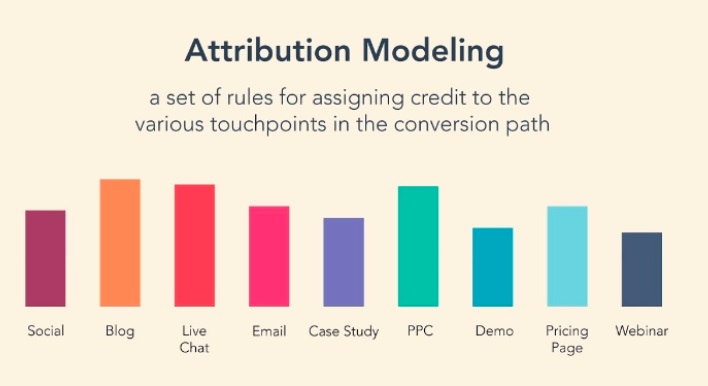
This allows businesses to optimise their marketing strategies by identifying which channels and tactics are most effective in driving conversions and sales.
Businesses can use various attribution models, such as first-click, last-click, and multi-touch, each with strengths and weaknesses.
Importance of Attribution Modeling
Attribution modeling is important for several reasons:
- Understanding the customer journey: Attribution modeling helps businesses better understand the various touchpoints that influence a customer’s decision to make a purchase or conversion, allowing them to optimise their marketing strategies accordingly.
- Allocating marketing budgets: By identifying which channels and tactics are most effective in driving conversions, businesses can give their marketing budgets more effectively, maximising their return on investment.
- Improving ROI: Attribution modeling helps businesses identify the most effective marketing channels and tactics, optimising their strategies and improving their return on investment.
- Personalising customer experiences: By understanding the customer journey, businesses can personalise their marketing and customer experiences, improving customer satisfaction and loyalty.
- Optimising conversion rates: Attribution modeling helps businesses identify bottlenecks and opportunities in the customer journey, allowing them to optimise their strategies and improve their conversion rates.
What are different attribution models?
Attribution models are methodologies used in marketing to assign credit or value to each touchpoint in a customer’s journey that leads to a desired outcome, such as a purchase or conversion.
There are several types of attribution models that businesses can use to analyse and measure the effectiveness of their marketing strategies, including:
- First-click attribution: Gives all credit to a customer’s first touchpoint with a business.
- Last-click attribution: Gives all credit to a customer’s last touchpoint with a business before making a purchase or conversion.
- Linear attribution: Distributes credit equally across all touchpoints in a customer’s journey.
- Time-decay attribution: Assigns more credit to touchpoints that are closer in time to the purchase or conversion.
- Position-based attribution: Gives more credit to the first and last touchpoints, with the remaining credit distributed equally among the intermediate touchpoints.
- Custom attribution: Allows businesses to create a custom model that aligns with their specific business goals and objectives.
How To Choose The Right Attribution Model?
Choosing the suitable attribution model depends on several factors, including the business’s goals and objectives, the complexity of the customer journey, and the available data. Here are some steps to help choose the suitable attribution model:
- Define business goals and objectives: Identify what outcomes or conversions you want to measure and optimise.
- Analyse customer journey: Analyse the customer journey and identify the touchpoints most influential in driving conversions.
- Consider data availability: Consider the data available to you, such as tracking and measurement tools, and determine which models are feasible to implement.
- Test and compare models: Test different models and compare the results to identify which models align best with your business goals and objectives.
- Consider using multiple models: Consider using multiple models to gain a more comprehensive understanding of the customer journey and optimise your marketing strategies accordingly.
Future Strategy for Attribution modeling
The future prospects of attribution models are promising as marketers seek ways to optimise their marketing efforts and better understand the customer journey. Here are a few potential developments that could shape the future of attribution modeling:
- Integration with emerging technologies: As new technologies such as augmented reality, virtual reality, and voice assistants become more prevalent, attribution models must adapt to account for these touchpoints. This could involve incorporating new data sources or developing new attribution models tailored to these technologies.
- Increased focus on customer experience: Attribution models will increasingly need to account for the overall customer experience rather than individual touchpoints. This could involve measuring metrics such as customer satisfaction, loyalty, and advocacy to understand the impact of marketing efforts on the entire customer journey.
- Cross-device attribution: With consumers using multiple devices to research and purchase products, cross-device attribution will become increasingly important. Attribution models must account for how customers move between devices and how different touchpoints on each device contribute to the final conversion.
- Greater use of machine learning: As data sets become larger and more complex, machine learning algorithms will be essential for analysing data and identifying patterns that can inform attribution models. This could involve developing more sophisticated models that account for multiple variables and accurately assign credit to all touchpoints in the customer journey.
Example
One brand example of attribution modeling is Airbnb. The company uses a multi-touch attribution model that assigns credit to all touchpoints in the customer journey that lead to a booking.
This includes online and offline touchpoints such as social media, search engine advertising, email marketing, and referral programs.

Airbnb also uses a combination of first-party and third-party data sources to inform its attribution model. First-party data includes data generated by user activity on the Airbnb website and mobile app.
In contrast, third-party data contains data from external sources such as advertising networks and data management platforms.
Airbnb uses various metrics to measure its marketing efforts’ effectiveness, including click-through rates, conversion rates, and revenue generated. By analysing these metrics and attributing credit to all touchpoints in the customer journey, Airbnb can optimise its marketing spend and drive more bookings.
FAQ
What is attribution modeling?
Attribution modeling assigns credit to various marketing channels or touchpoints that lead to a conversion. It helps marketers understand the customer journey and optimise their marketing efforts accordingly.
What types of attribution models are there?
There are several types of attribution models, including single-touch models, such as first-click or last-click attribution, and multi-touch models, such as linear or time decay attribution.
Each model has its own strengths and weaknesses and can be tailored to fit the needs of a specific business.
How do you determine which attribution model to use?
The best attribution model for your business will depend on your goals and the nature of your customer journey. Evaluating your marketing channels and determining which touchpoints are most influential in driving conversions is essential.
You can then select an attribution model that accurately reflects the customer journey and assigns credit to those touchpoints.
What are the benefits of using attribution modeling?
Attribution modeling provides several benefits, including a better understanding of the customer journey, the ability to optimise marketing spend across all channels, and the ability to measure the impact of individual marketing campaigns.
How does machine learning fit into attribution modeling?
Machine learning can analyse large and complex data sets, identify patterns and trends that might not be apparent through manual analysis, and accurately assign credit to all touchpoints in the customer journey.
This can help create more sophisticated attribution models that better reflect modern customer journeys’ complex nature.
How do you measure the effectiveness of attribution modeling?
The effectiveness of attribution modeling can be measured through various metrics, including click-through rates, conversion rates, and revenue generated.
You can optimise your marketing efforts and drive more conversions by analysing these metrics and attributing credit to all touchpoints in the customer journey.
Also Read – The customer journey — definition, stages, and benefits



